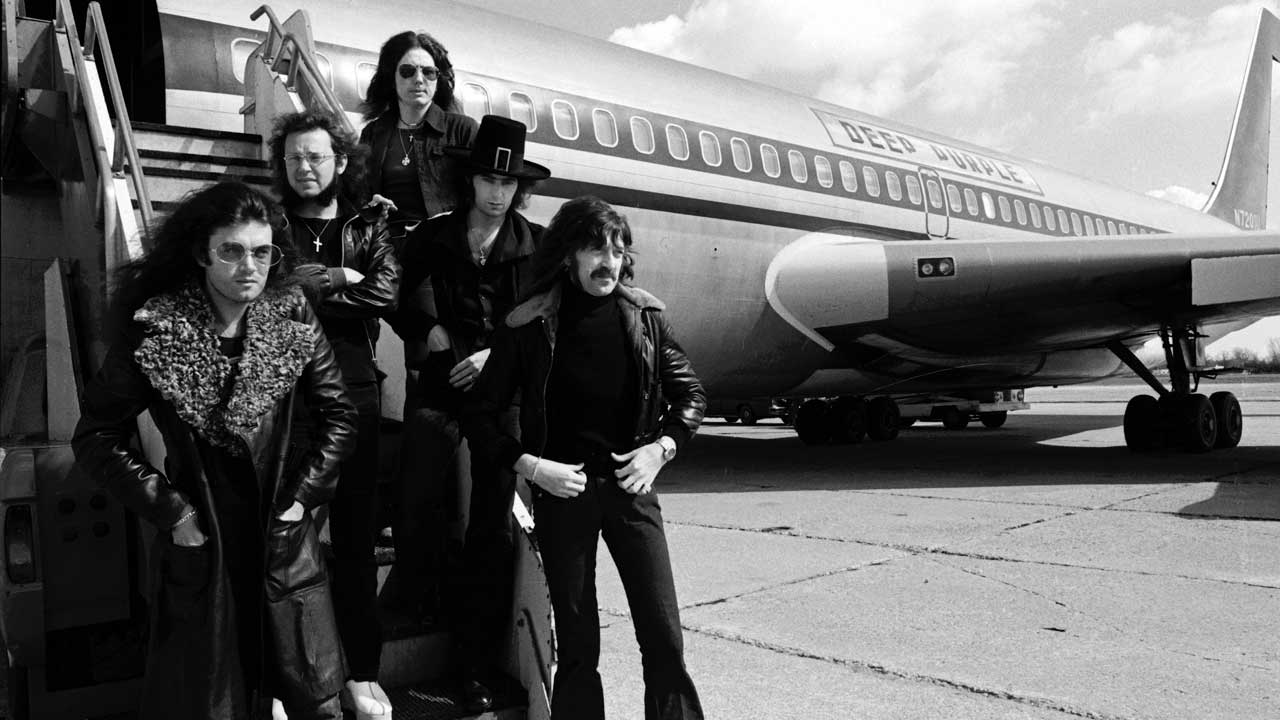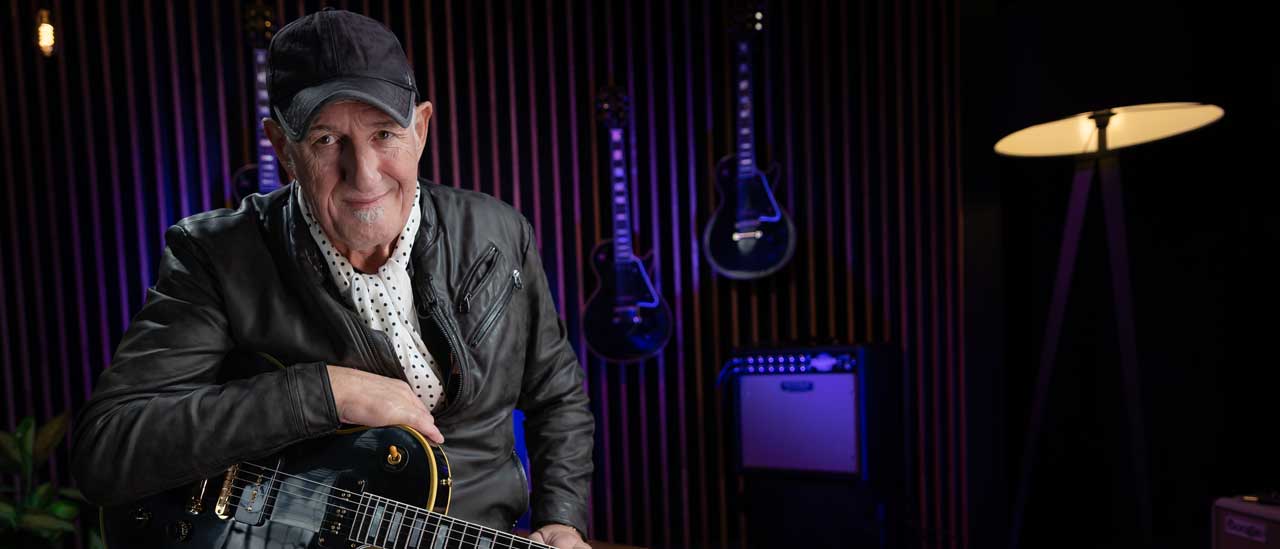"Bonzo was a dear friend of mine, and I think we might've been listening to a little Led Zeppelin": Deep Purple's track-by-track guide to Burn
David Coverdale, Glenn Hughes and Ian Paice reveal the secrets of Burn, Deep Purple's first album with the Mark III line-up

The first album made by Deep Purple's Mark III line-up, Burn was album that catapulted David Coverdale from nowhere to an international star overnight. Released on February 15, 1974, it also saw the introduction of Trapeze bassist and singer Glenn Hughes, lured into the band by the prospect of filthy lucre and the chance to sing alongside Paul Rodgers, who'd been first choice for the Coverdale role.
The arrival of the the men from Redcar and Cannock gave Purple new impetus, and while the world waited for them to crumble, the new line-up solidified. Burn sold by the bucketful.
Below, Coverdale, Hughes and drummer Ian Paice take us through the album, track-by-track.

Burn
David Coverdale: I wrote about half a dozen sets of lyrics for this song – I was that keen! The final words to Burn – and also the words to the Stormbringer song for the next album, for idle curiosity – came about because I was just trying to please Ritchie [Blackmore], I guess. These lyrics aren’t the stuff I would normally write; I looked upon them as science-fiction poems.
Glenn Hughes: Blackmore came up with that classic rock riff, but there’s a lot of talk about it being ripped from something that was written in the forties. [George Gershwin’s] Fascinating Rhythm, wasn’t it? I think it could be from that. Every artist borrows from other artists – but this is a classic example of where Ritchie may have taken something from the forties or fifties.
Ian Paice: It’s a pretty well-played track. It’s got a rapid pace about it. I’ve always said that playing fast is a lot easier than playing slow, because if you play something fast and you screw up, nobody really hears it. But if you play slow and you screw something up, then everybody hears it. I think that as an opening statement from the Mark III line-up, it’s pretty cool.
Might Just Take Your Life
DC: I think that came out of Jon [Lord]; it was one of Jon’s ideas. It was particularly difficult for Jon as a composer to work in a guitar-oriented rock scenario, but there was a perfect marriage [between keyboards and guitar] on Might Just Take Your Life as far as I was concerned.
Sign up below to get the latest from Classic Rock, plus exclusive special offers, direct to your inbox!
GH: Pretty much introducing the dual lead vocals of Hughes and Coverdale. I don’t think this song could have been written for the Mark II line-up because it definitely had more of a bluesy-based feel, hence Lordy’s intro with the Hammond thing.
IP: That was really playing into David’s blues range – it was just to find that groove and let a fairly simple little rock’n’roll song take over.
Lay Down Stay Down
DC: I was a bit worried when I first heard the remastered version; it sounded really dorky and softer than it should have been. I think they’ve adjusted that; I would hope so. But it was wonderful to hear it again after so many years because I don’t really go back that far and listen to old songs – I just enjoy the memories.
GH: It’s another fresh-sounding song and Paicey plays brilliantly.
IP: It harkens back a little bit rhythmically to Mark II. It had some of that rock’n’roll fire in it, while some of the other tracks on Burn were slowly moving in a different direction. I think you could’ve heard Lay Down Stay Down – OK, with a different lyric – but it could just as easily have sat on In Rock as it did on Burn.
Sail Away
DC: That was one of my first, really forceful lyrics – but I still think it should have been either me or Glenn who sang the whole song; it throws the sentiment and the atmosphere of the song by having dual singers. Either one of us could’ve done it justice.
GH: I just love the sound of Blackers’ guitar. I really love this particular song.
IP: One of my favourite tracks – I just love the riff on it. It’s got a wonderful feel.
You Fool No One
DC: This highlights once again the dual-harmony style of Glenn and myself which kind of borrowed from Cream a little bit.
GH: Paicey loved Bonzo [John Bonham], and Bonzo was also a dear friend of mine, and I think we might’ve been listening to a little Led Zeppelin. I don’t think Paicey would mind me telling you this, because we were room-mates at the time. So Paicey actually came up with that drum groove… he came up with this amazing drum track and it was one of the first takes we did.
IP: I was messing around with a rudiment involving the cowbell and the bass drum, and as I was playing Ritchie came in with his riff and they just went together. Basically it’s a drum paradiddle between the cowbell and the bass drum and the snare drum, but it’s a wonderful four-four meter that you can play this rudiment in.
What’s Goin’ On Here
DC: That’s just a bit of fun. It was actually based around a Jimi Hendrix song – it might have been Highway Chile. It gave Jon a great opportunity to stretch out a little.
GH: David and I had fun singing it. It’s just a twelve-bar blues song, very simple, very live.
IP: Just a nice, simple little blues, really. Fun to play, but an album track, you know.
Mistreated
DC: This track kind of sums up what I brought to Purple, in terms of establishing a separate identity away from the Mark III line-up. This song and Sail Away, of course. That’s what I brought to the mix. Mistreated still has legs, it still has life, and it still means a lot to people.
GH: When Ritchie first played me the riff I knew immediately how at home I would be in Purple.
IP: It’s a great vehicle for David’s voice. It’s a very, very clever little riff because it’s so simple. And the simplicity is enhanced by a great sound from the guitar. It creates a mood – not just the vocal parts but the solo parts, the way they bring you back down. It’s a little nugget.
A200
DC: That was always an instrumental; I had nothing to do with it. I was probably down the pub.
GH: Ritchie wanted to give Jon a piece to play on the record. Listening back to it, it sounds pretty good. Those synth sounds I hated immensely first time around are coming back into vogue.
IP: It was an idea that came out of jamming. Just a nice instrumental thing, you know.
Classic Rock is the online home of the world's best rock'n'roll magazine. We bring you breaking news, exclusive interviews and behind-the-scenes features, as well as unrivalled access to the biggest names in rock music; from Led Zeppelin to Deep Purple, Guns N’ Roses to the Rolling Stones, AC/DC to the Sex Pistols, and everything in between. Our expert writers bring you the very best on established and emerging bands plus everything you need to know about the mightiest new music releases.

